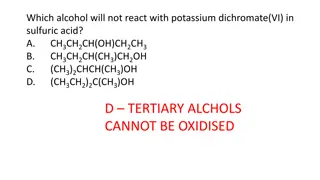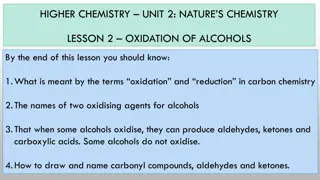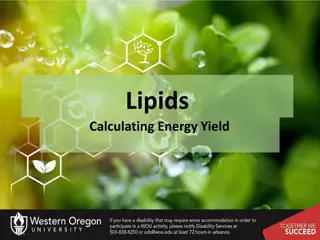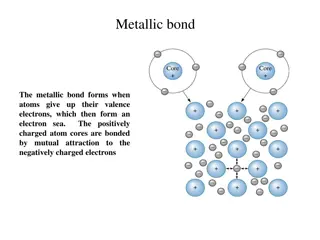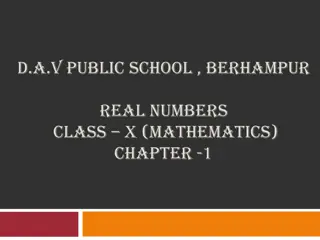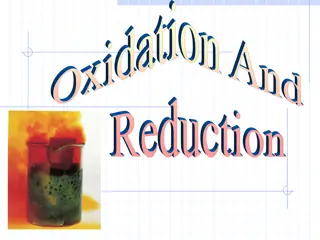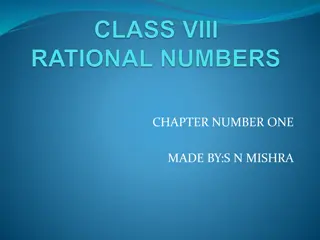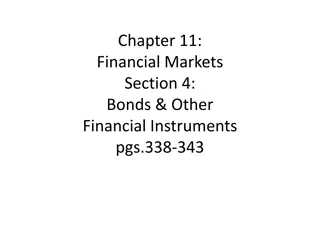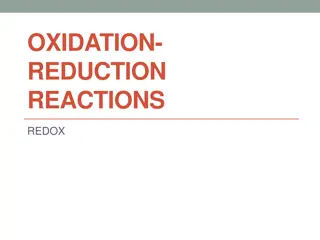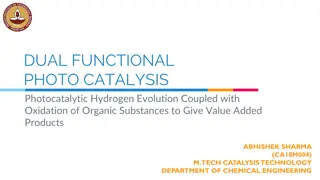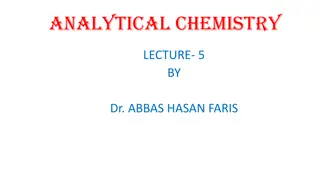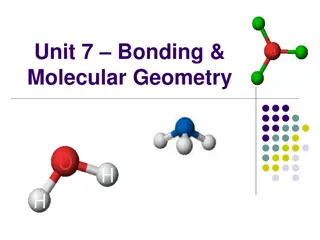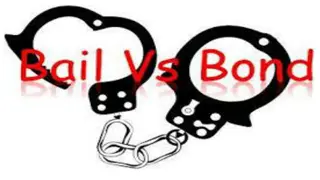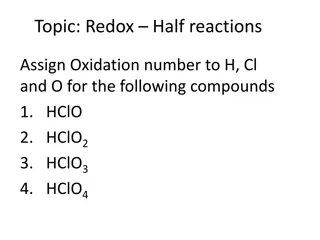Oxidation Numbers and Chemical Bonds
Concept of oxidation numbers for tracking electrons in reactions, rules for assigning them to elements, explanation of chemical bonds including ionic, covalent, and metallic. Memorization tips for common polyatomic ions and binary nomenclature explained.
Download Presentation

Please find below an Image/Link to download the presentation.
The content on the website is provided AS IS for your information and personal use only. It may not be sold, licensed, or shared on other websites without obtaining consent from the author.If you encounter any issues during the download, it is possible that the publisher has removed the file from their server.
You are allowed to download the files provided on this website for personal or commercial use, subject to the condition that they are used lawfully. All files are the property of their respective owners.
The content on the website is provided AS IS for your information and personal use only. It may not be sold, licensed, or shared on other websites without obtaining consent from the author.
E N D
Presentation Transcript
Assigning Oxidation States The concept of oxidation numbers (or oxidation states) was devised as a simple way of keeping track of electrons in reactions. We use the following rules for assigning oxidation numbers: Free Elements (Na, O2, etc.) Group 1 Elements in a compound1 Group 2 Elements in a compound Group 3 Elements in a compound O in a compound2 F in a compound 0 +1 +2 +3 -2 -1 1Exception to this rule occurs for hydrogen in hydrides (e.g. LiH, where the oxidation state of hydrogen is 1). 2Exception to this rule occurs in peroxides (e.g. H2O2, where the oxidation state of oxygen is 1).
NOTE: Three transition metals, Cd2+, Zn2+ and Ag+, are understood to exist in these oxidation states (numbers); therefore, Roman numerals are NOT included in parentheses. Also note that the mercury(I) ion is written as a diatomic ion (dimer): Hg2+2. Practice Determine the oxidation state of each underlined atom: KMnO4, ClO4-, and S2O32-.
Chemical Bonds Bonds glue Ionic Covalent Metallic e- transfer sharing sea of e- Crystal lattice molecules e- are delocalized. ions + hypothetical charge - Na + Cl Na+ Cl - salts very strong bonds generally between metals and non metals. Solids at room temp. Poor conductors of electricity in a solid state H + H H H . orbital overlap Bonding e- are localized between two atoms Formed between two nonmetals
Common Polyatomic Ions YOU MUST MEMORIZE THESE!!! acetate C2H3O2- hydrogen phosphate HPO42- ammonium NH4+ hydrogen sulfate HSO4- carbonate CO32- hydroxide OH- chromate hypochlorite CrO42- nitrate NO3- ClO- nitrite NO2- chlorite ClO2- oxalate C2O42- chlorate ClO3- permanganate MnO4- perchlorate ClO4- peroxide O22- cyanide CN- phosphate PO43- dichromate Cr2O72- sulfate SO42- dihydrogen phosphate H2PO4- sulfite SO32- hydrogen carbonate HCO3- thiocyanate SCN-
Binary Nomenclature Ionic Covalent Nonmetal and Nonmetal Metal and Nonmetal Transition Metal and Nonmetal 1. The first element is named using its full name. 2. The second element is named by taking the first part of the element name and adding the -ide suffix. 3. Prefixes are used to denote the numbers of atoms present (note: mono- is NEVER used to name the first element). examples: 1. Cation is named first and the anion is named second. 2. Monatomic cation takes its name from the name of the element. 3. A monatomic anion is named by taking the first part of the element name and adding the -ide suffix. Metals that can form more than one type of positive ion have Roman numerals in parentheses (no space) to indicate the charge of the cation. examples: examples: N2O dinitrogen monoxide NO2 nitrogen dioxide N2O3 dinitrogen trioxide CoBr2 cobalt(II) bromide CrCl3 chromium(III) chloride NaCl sodium chloride MgO magnesium oxide Li3N lithium nitride Non-binary - ionic compounds that contain polyatomic ions
Naming Acids There are two main types of acids that we will encounter at the onset of this course, binary acids, and oxoacids. 1. Binary Acids certain compounds of H with other nonmetal atoms. Examples: HF(aq) = hydrofluoric acid HCl(aq) = hydrochloric acid HBr(aq) = hydrobromic acid HI(aq) = hydroiodic acid H2S(aq) = hydrosulfuric acid 2. Oxoacids Hydrogen with two other nonmetals, one of which is oxygen. Examples: HClO = hypochlorous acid HClO2 = chlorous acid HClO3 = chloric acid HClO4 = perchloric acid HNO2 = nitrous acid HNO3 = nitric acid
Naming Hydrates and Simple Organic Compounds Hydrates are ordinary chemical substances that have associated with them a certain number of water molecules. For example, CuSO4 5H2O is read copper(II) sulfate pentahydrate. As we will see in section 2, when determining the overall molecular weight of this particular compound, you ADD five water molecules to the initial CuSO4 (as opposed to multiply, where the is commonly misinterpreted by beginner chemistry students; more on this later)! When dealing with organic (or carbon-containing) compounds, we refer to the following prefixes: Number of Carbons 1 2 3 4 5 6 7 8 9 10 Prefix Meth- Eth- Prop- But- Pent- Hex- Hept- Oct- Non- Dec-
Naming Simple Organic Compounds Compounds containing only carbon and hydrogen are called hydrocarbons. Hydrocarbons that contain only carbon-carbon single bonds are called alkanes. The simplest alkane is methane (CH4), followed by ethane (C2H6 or CH3CH3), etc. The names of the alkanes are composed of two parts: a prefix indicating the number of carbon atoms, and the suffix -ane indicating that the molecule contains only carbon-carbon single bonds. Hydrocarbons that contain only carbon=carbon double bonds are called alkenes. The simplest alkene is ethene (C2H4 or CH2CH2) followed by propene (C3H6).
Lecture Questions 1. Name each of the following compounds: A. B. C. D HClO4 (s) & (aq) Ca3(PO4)2 AlI3 V2O5 E. F. G. H. KMnO4 K2Cr2O7 SiF4 Ca(HSO3)2 2. Write formulas for the following compounds: A. chromium(III) carbonate C. octane E. sodium hydroxide G. aluminum hydroxide I. peroiodic acid B. potassium chlorate D. cobalt(II) chloride heptahydrate F. potassium hypochlorite H. Lead(IV) oxide J. Nitrous acid
Workshop on Nomenclature Page 1 1. Name each of the following compounds: A. Al2(SO4)3 B. Pb(NO3)2 C. BaSO3 D. NaNO2 E. NaCl F. MgCl2 G. RbBr H. CsF I. CH3CH2CH2CH2CH3 J. Li2C2O4 K. TiO2 L. BaCl2 8H2O M. NO N. NaHSO4 O. N2F4 P. FePO4 2. Write formulas for the following compounds: A. potassium dichromate B. sulfur hexafluoride C. sodium dihydrogen phosphate D. lithium nitride C. hydrogen cyanide D. sodium peroxide E. copper(II) acetate F. carbon tetrafluoride G. ammonium acetate H. ammonium hydrogen sulfate I. cobalt(III) nitrate J. mercury(I) chloride I. ammonium chromate J. copper(I) bromide K. germanium dioxide L. butane
Workshop on nomeclature page 2 3. The formulas and common names for several substances are given below. What are the systematic names for these substances? A. B. C. D. E. sugar of lead blue vitrol quicklime milk of magnesia laughing gas Pb(C2H3O2)2 CuSO4 CaO Mg(OH)2 N2O 4. Writing Names and Formulas of Compounds A. Calcium hydroxide B. Nickel(II) phosphate C. Beryllium iodide D. Chromium(III) sulfide E. Diphosphorus tetroxide F. Aluminum oxide G. Ammonium nitrate H. Phosphorus pentachloride ____________________ ____________________ ____________________ ____________________ ____________________ ____________________ ____________________ _________________
Workshop on Nomenclature page 3 5. Name each of the following compounds. A. Na3PO4 B. PF5 D. FeBr3 E. Cu2O F. Cr(OH)3 G. Rb2SO4 H. N2O I. HI (aq) J. KH K. Cr2O3 L. MgSO4 6H2O M. CH3CH2CH3 ________________________________ ________________________________ ________________________________ ________________________________ ________________________________ ________________________________ ________________________________ ________________________________ ________________________________ ________________________________ ________________________________ ________________________________


